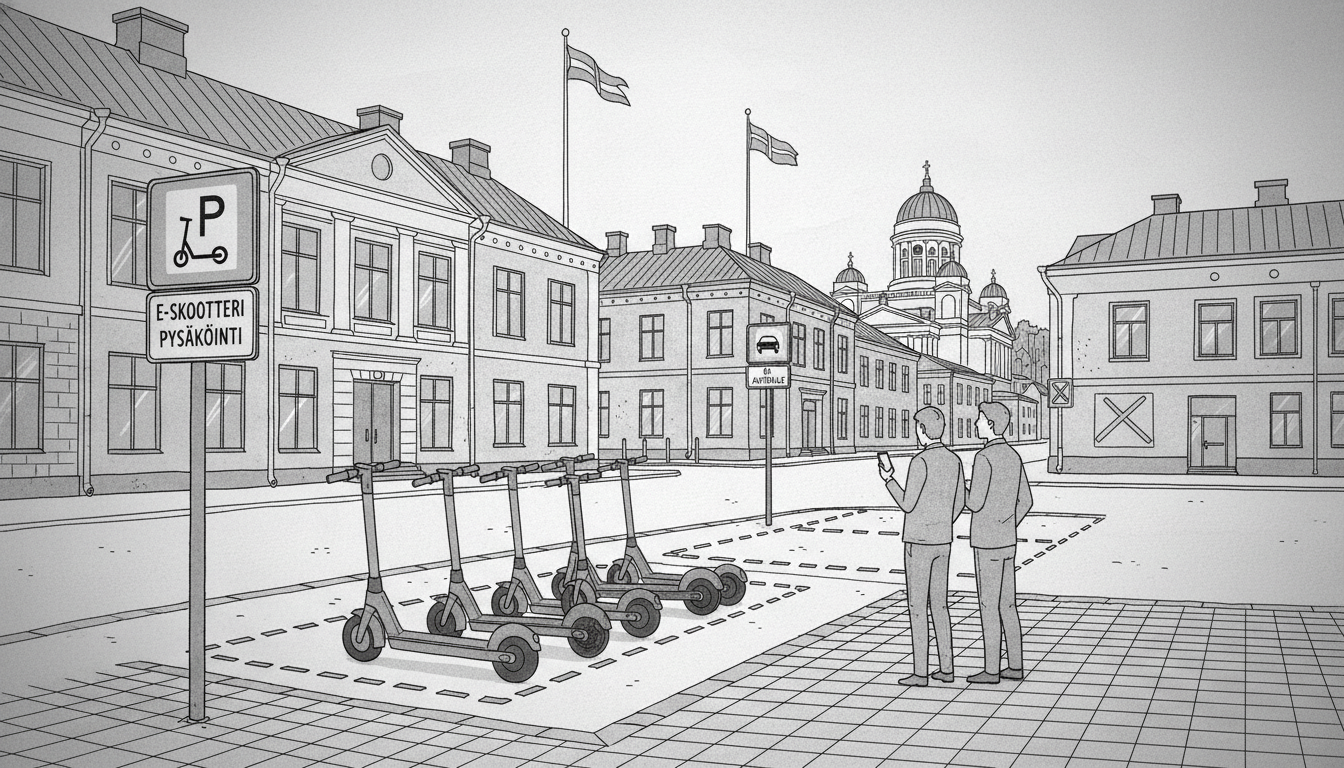Helsinki is introducing strict new regulations for shared e-scooters and bicycles that will significantly reshape urban mobility. The city will require all shared mobility operators to obtain micro-mobility permits starting in the Third Quarter, replacing previous voluntary agreements.
Three distinct zones will now govern where and how e-scooters can operate. Zone 1 covers the central city area, while Zone 2 extends to Jätkasaari, Pasila, and Mustikkamaa. Both zones will feature designated parking areas enforced through geofencing technology.
The changes come with substantial urban space implications. Approximately 160 new micro-mobility parking areas will be created, but these will replace 58 car parking spots in the city center. During winter months, these same spaces will serve partially as snow storage areas, continuing existing winter management practices.
Vehicle limits will be strictly enforced. Zone 1 can host maximum 1,200 vehicles, while Zone 2 accommodates up to 3,500. These numbers will be divided equally among service providers. The city clarified it won't charge rental fees for these parking spaces.
New enforcement powers give parking inspectors immediate authority to relocate improperly parked vehicles. Operators must remove any vehicle parked in the same spot for over 72 hours in Zone 1. Weekend night restrictions and May Day prohibitions, previously voluntary, now become official permit requirements.
The operating season generally runs from April 1 through November 30, though the city can adjust these dates based on weather conditions. Speed limits and slow-speed zones remain unchanged from previous regulations.
This regulatory shift follows national legal changes earlier this year that established age and blood alcohol limits for e-scooter users. The updated traffic law also empowered municipalities to set additional conditions through micro-mobility permits.
Helsinki's Urban Environment Committee will vote on the proposal Monday. The first permit period will last approximately one year, with potential extensions for longer terms in the future.
The move represents Helsinki's ongoing effort to balance emerging mobility technologies with urban livability. By creating designated parking zones and enforcing vehicle limits, the city aims to reduce sidewalk clutter while maintaining transportation options. The replacement of car parking spots with micro-mobility spaces signals a continued shift toward sustainable urban transport priorities.
International observers note that Helsinki's approach mirrors similar regulatory developments across European capitals. Many cities struggle with shared e-scooter management, particularly regarding parking enforcement and public space allocation. Helsinki's zone-based system with geofencing enforcement represents one of the more comprehensive regulatory frameworks implemented to date.

